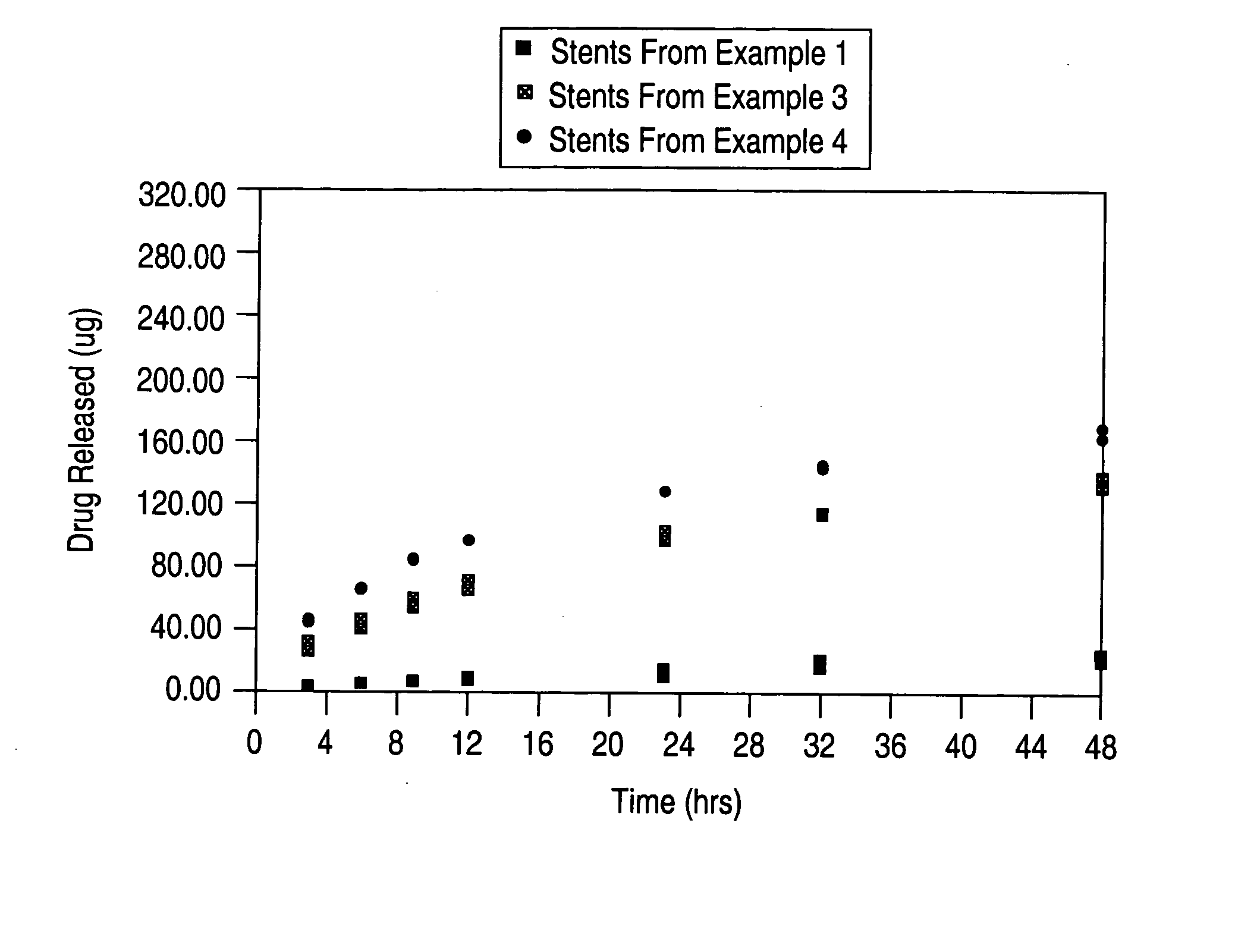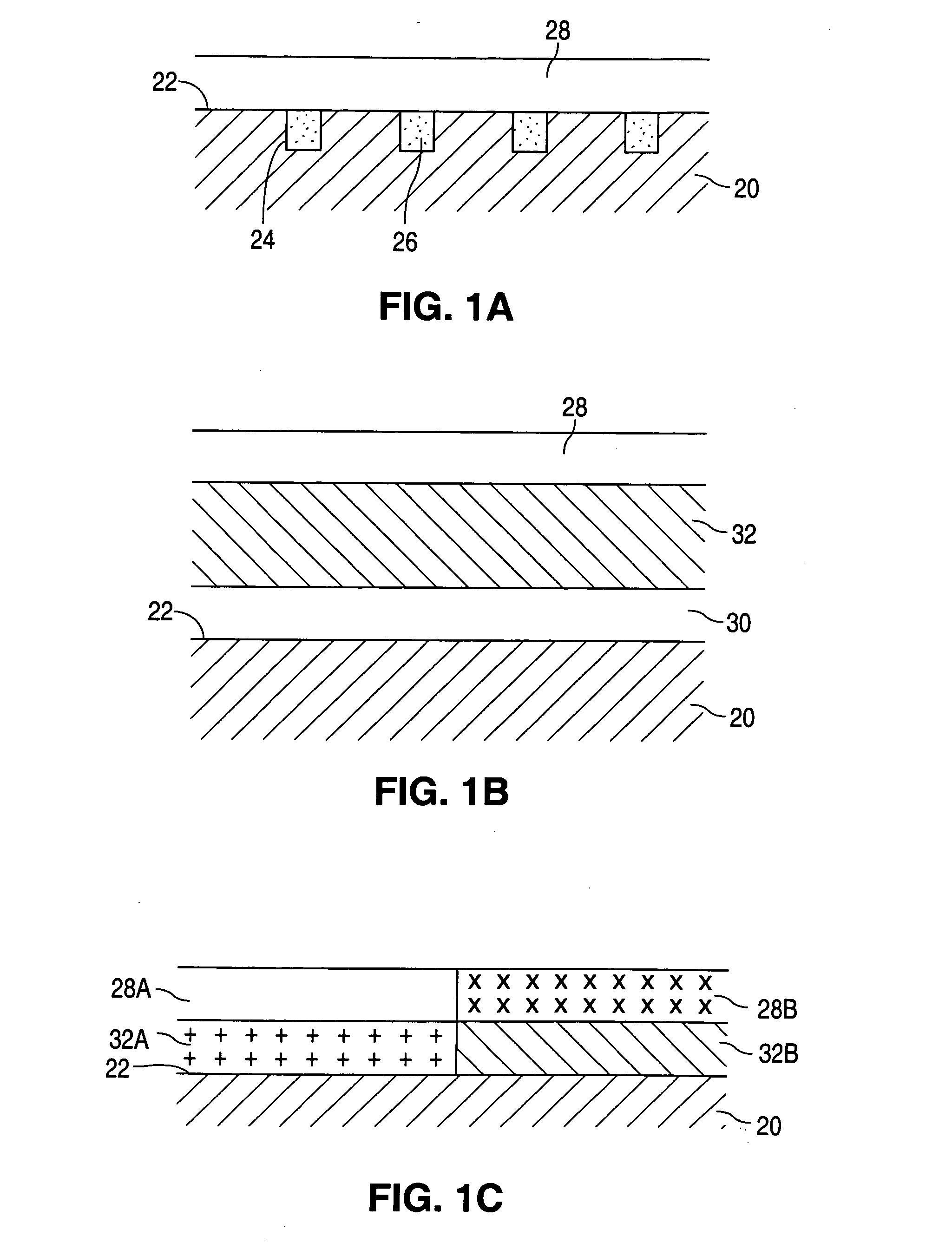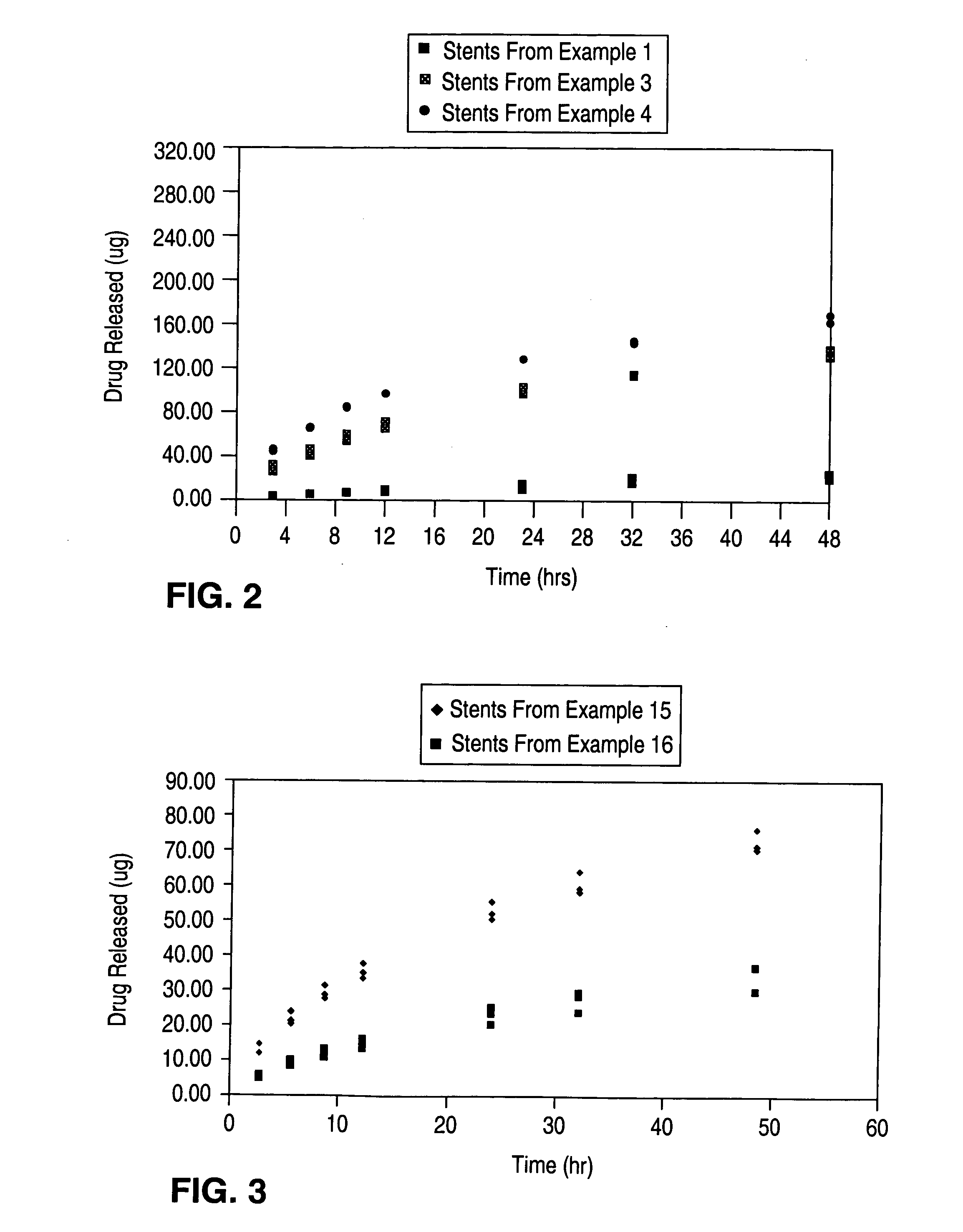40-O-(2-hydroxy)ethyl-rapamycin coated stent
a stent and ethyl-rapamycin technology, applied in the direction of blood vessels, packaging foodstuffs, packaged goods, etc., can solve the problems of affecting the delivery of ethyl-rapamycin, so as to reduce the release rate of drug, and reduce the effect of drug releas
- Summary
- Abstract
- Description
- Claims
- Application Information
AI Technical Summary
Benefits of technology
Problems solved by technology
Method used
Image
Examples
example 1
[0091] 35 13 mm PENTA stents (available from Guidant Corporation) were coated by spraying a 2% (w / w) solution of poly(ethylene-co-vinyl alcohol) (44 mole % ethylene) (“EVAL”) in 98% (w / w) dimethylacetamide. The solvent was removed by baking at 140° C. for 2 hours. A solution of 1.9% (w / w) EVAL and 0.7% (w / w) 40-O-(2-hydroxy)ethyl-rapamycin in a mixture of 68.2% (w / w) dimethylacetamide and 29.2% (w / w) ethanol was spray coated onto the stents to a thickness with a target of 175 μg of 40-O-(2-hydroxy)ethyl-rapamycin on each stent. The stents were then baked at 50° C. for 2 hours. A barrier layer was formed by spraying the stents with a 4% (w / w) solution of EVAL in a mixture of 76% (w / w) dimethylacetamide and 20% (w / w) pentane. Another 2 hour bake at 50° C. was performed to remove the solvent.
[0092] A select number of stents were analyzed to compare the target coating formulation with the final coating formulation. The results are as follows: For the primer layer, there was a target dr...
example 2
[0093] A drug-coated stent was placed in a volumetric flask. An appropriate amount of the extraction solvent acetonitrile with 0.02% BHT as protectant was added (e.g., in a 10 ml volumetric flask, with about 9 ml solvent added). The flask was sonicated for a sufficient time to extract all of the drug from the reservoir region. Then, the solution in the flask was filled to mark with the solvent solution. The drug solution was the analyzed by HPLC. The HPLC system consisted of a Waters 2690 system with an analytical pump, a column compartment (set at 40° C.), an auto-sampler, and a 996 PDA detector. The column was an YMC Pro C18 (150 mm×4.6 I.D., 3 μm particle size), maintained at a temperature of 40° C. The mobile phase consisted of 75% acetonitrile and 25% 20 mMolar ammonium acetate. The flow rate was set on 1 ml / min. The HPLC release rate results were quantified by comparing the results with a reference standard. The total drug content of the stent was then calculated.
example 3
[0094] 34 13 mm PENTA stents were coated by spraying a 2% (w / w) solution of EVAL and 98% (w / w) dimethylacetamide. The solvent was removed by baking at 140° C. for 2 hours. A solution of 1.9% (w / w) EVAL and 1.1% (w / w) 40-O-(2-hydroxy)ethyl-rapamycin in a mixture of 67.9% (w / w) dimethylacetamide and 29.1% (w / w) ethanol was spray coated onto the stents to a thickness with a target of 275 μg of 40-O-(2-hydroxy)ethyl-rapamycin on each stent. The stents were then baked at 50° C. for 2 hours. A barrier layer was formed by spraying the stents with a 4% (w / w) solution of EVAL in a mixture of 76% (w / w) dimethylacetamide and 20% (w / w) pentane. Another 2 hour bake at 50° C. was performed to remove the solvent.
[0095] A select number of stents were analyzed to compare the target coating formulation with the final coating formulation. The results are as follows: For the primer layer, there was a target dry weight of 40 μg of polymer, and a measured average dry weight of 43±3 μg of polymer. For th...
PUM
| Property | Measurement | Unit |
|---|---|---|
| mole percentage | aaaaa | aaaaa |
| mol % | aaaaa | aaaaa |
| mol % | aaaaa | aaaaa |
Abstract
Description
Claims
Application Information
 Login to View More
Login to View More - R&D
- Intellectual Property
- Life Sciences
- Materials
- Tech Scout
- Unparalleled Data Quality
- Higher Quality Content
- 60% Fewer Hallucinations
Browse by: Latest US Patents, China's latest patents, Technical Efficacy Thesaurus, Application Domain, Technology Topic, Popular Technical Reports.
© 2025 PatSnap. All rights reserved.Legal|Privacy policy|Modern Slavery Act Transparency Statement|Sitemap|About US| Contact US: help@patsnap.com



